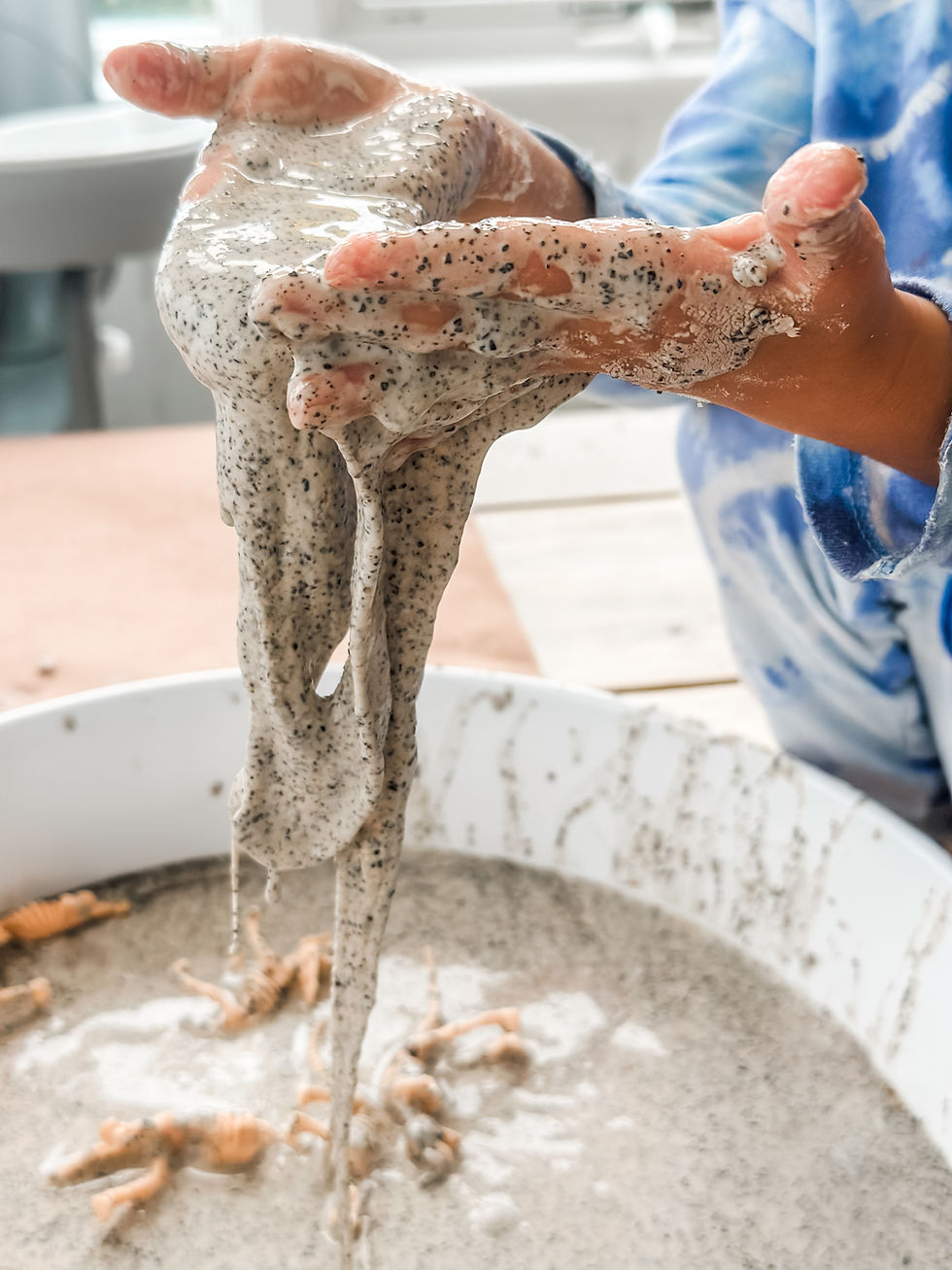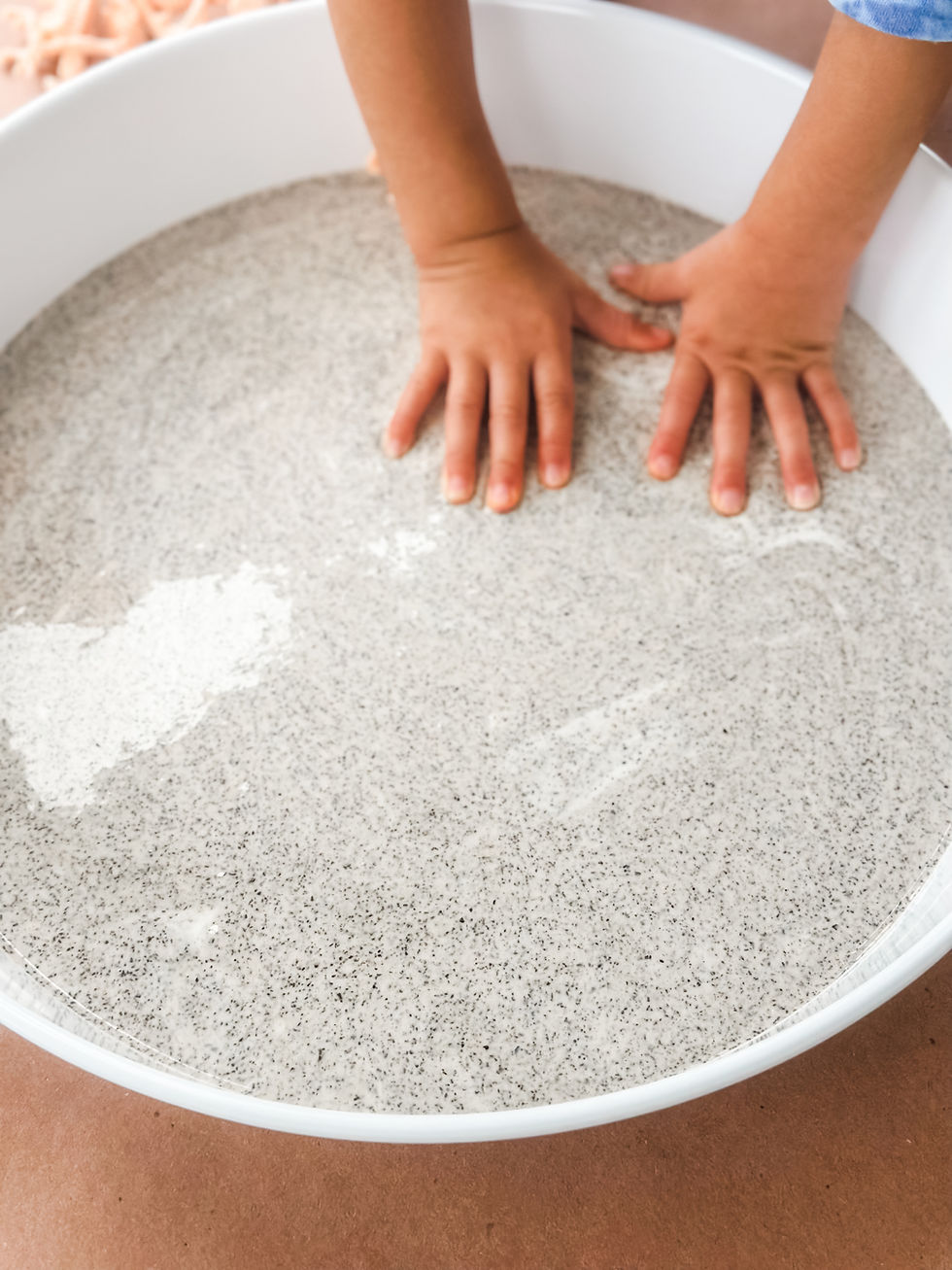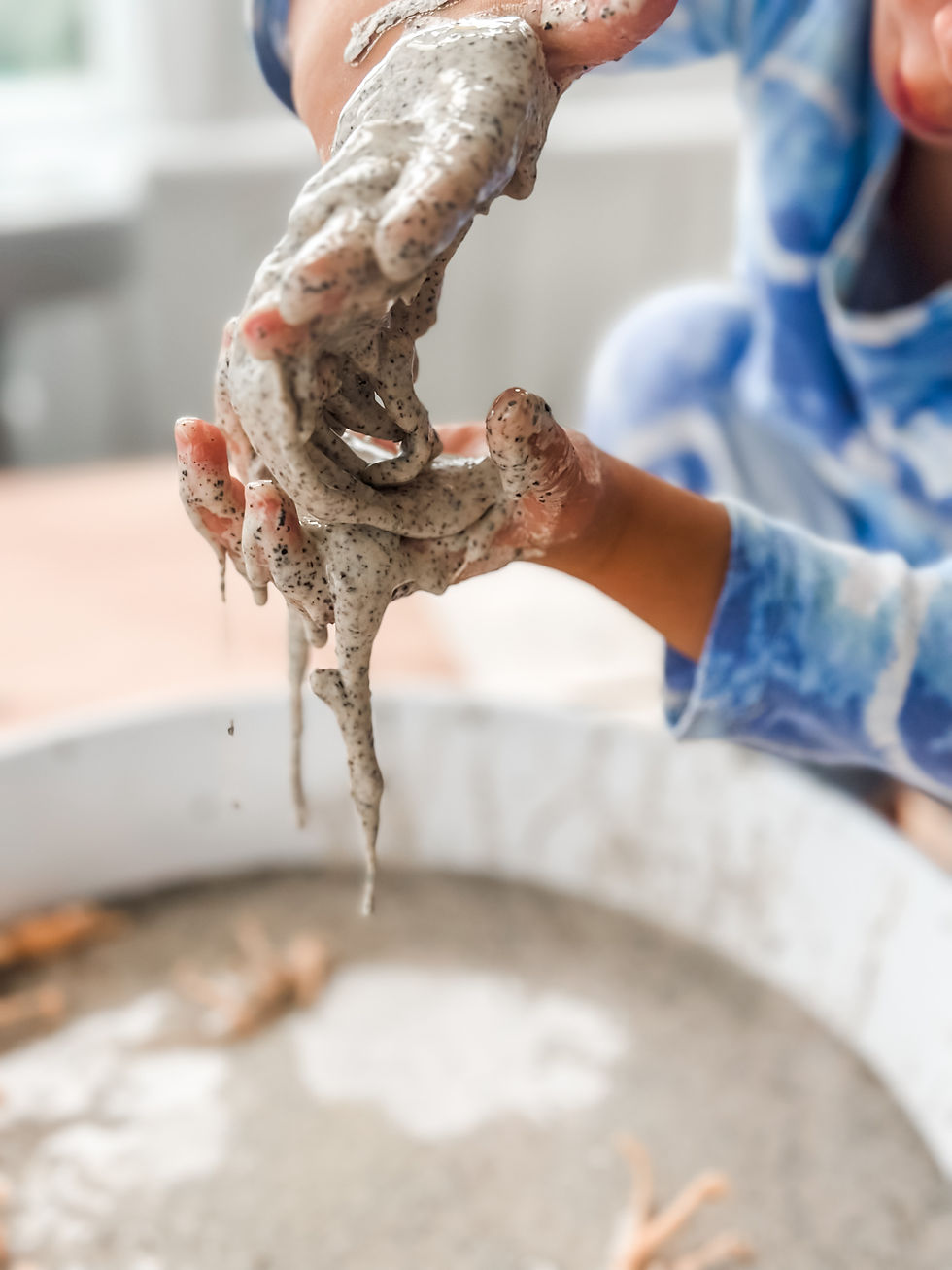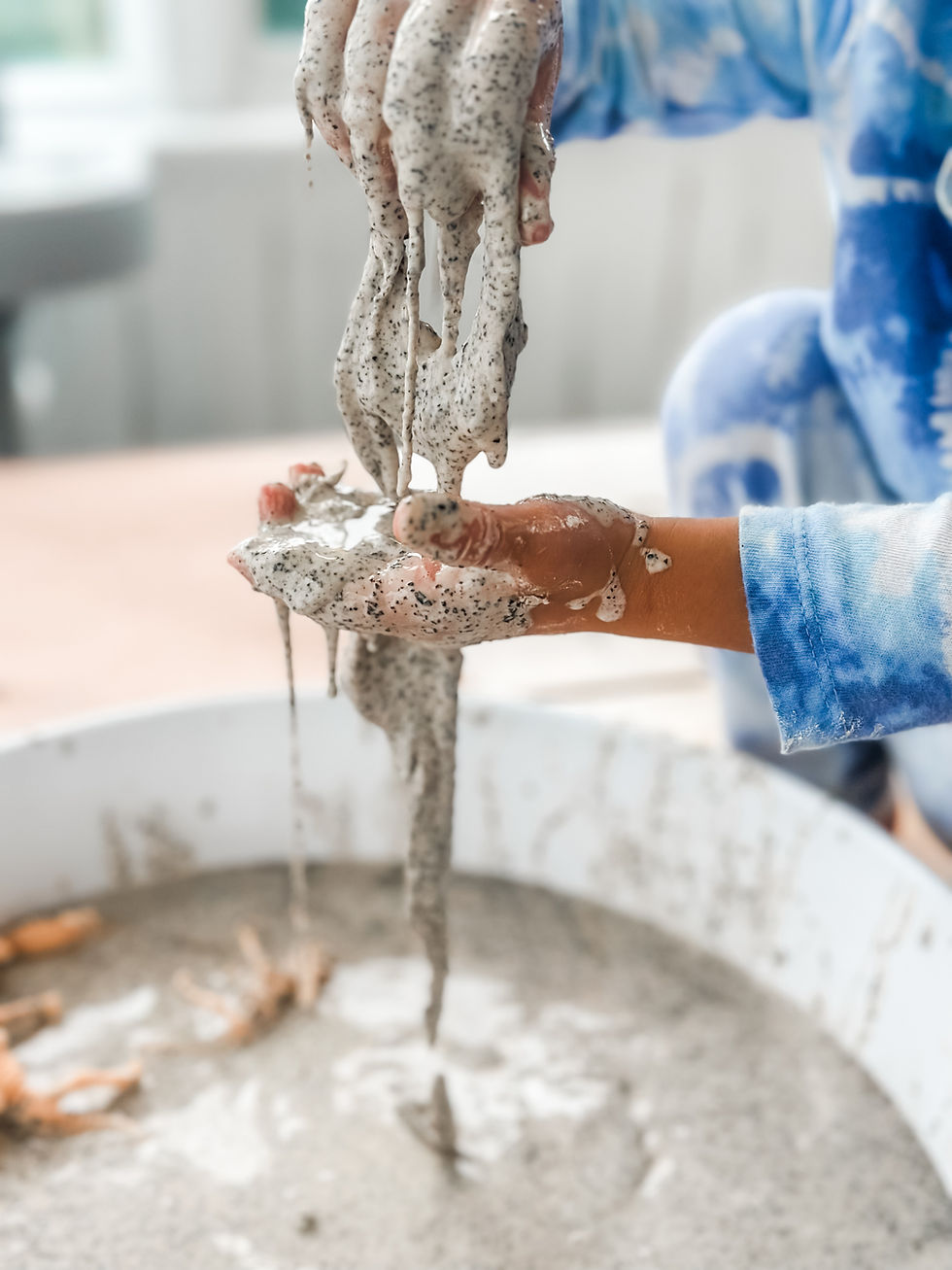In this BLOG post I will teach you how to make Dinosaur Swamp Oobleck, the benefits of messy play and tips to contain the mess.

Head to our Instagram page to see more ways to learn & play at home or in the classroom! We love to see you play & share the joy of hands-on crafts & activities at home. Be sure to tag @aplayfilledlife on Instagram or Facebook if you try any of our ideas!!
XO Gina
Click HERE for all of our favorite dinosaur-themed sensory tools and storage containers.
A Play Filled Life participates in an affiliate program and may receive a tiny commission on eligible purchases through her link, at no extra cost to you.
Oobleck is SO. MUCH. FUN. It is a great messy-play activity that can be done at home, outdoors, in the classroom or in a therapy space. While children explore Oobleck, they are not only gaining the benefits of sensory play, but they are also exploring Science concepts!
Oobleck is a non-Newtonian substance. It's a solid, It's a liquid. It can be thick or gooey or everything in between. It can be white, or it can be colorful. It can be used with plastic animals or trucks or Barbies or rocks.
Our dinosaur swamp version is SO MUCH FUN. It's texture. It's touch. It's fine motor skills. It's such a fun way to learn and play at home. If you want to omit the coffee grounds, you can. Leave it as is, or squirt in a few drops of brown food coloring. Another option: add a scoop or two or cocoa powder to make it look like MUD! Check it out HERE!
You get to decide what is and manageable in your home. Always monitor young children during sensory play.

Materials:
(2) cups Cornstarch
(1) cup Water
Used coffee grounds
Sensory bin or bowls
Spoon
Step 1: Measure corn starch and pour it into a sensory tray or bowl.
Step 2: Dump in 1/2 cup or so of ground coffee (i dump it straight from the coffee pot after I brew a pot). Mix well.
Step 3: Slowly start to incorporate in the water. Mix as you go until you reach your desired consistency.
Step 4: Add in your favorite scoops or bowls and dinosaur figures.
Step5: PLAY!
Make observations as you play. How does it smell? How does it feel? What happens when you add more water to the Oobleck bin? What does it look like as it dries?
Messy play is SO beneficial for children. It's open-ended, encourages creativity, provides sensory input & teaches them about their personal boundaries. Messy play activates the senses and has been known to be calming, offering an incredible opportunity to practice self-regulation strategies.

What skills are you working on during messy play?
Fine & Gross Motor Skills: As the child squishes and squeezes, they are developing their finger and hand muscles. Those same finger and hand muscles are responsible for self-help skills such as: feeding yourself, zippering your coat and holding a pencil during writing! Messy play can also help support spatial awareness, balance & coordination.
Hand-Eye Coordination: Hand-eye coordination is simultaneously using your hands & your eyes for a task. Strong hand-eye coordination helps you with tasks such as feeding yourself, coloring in the lines & pouring a drink in a cup.
Bilateral coordination: Using both sides of the body to complete a task.
Cognitive development refers to how a child acquires and understands information; how they think, learn and problem solve. There are many opportunities to develop cognitive development during messy play through problem solving and understanding cause/effect.
Language Development: Messy play is SO good for supporting language development. There are opportunities to learn new words and practice phrases.
Social Skills: Messy play can help to establish and strengthen social skills. Children will practice using their manners, sharing, turn-taking and having patience.
Clean up-tips:
For easy clean up: keep wipes nearby, along with a plastic bag or trash bin to discard.
Wear old clothes or a bathing suit, and plan to head to the tub after this fun sensory play!
Take it outdoors! Wash it off with a hose when you're done.
Use an old beach towel or sheet under the bins to catch any spills.
When Oobleck dries. it turns back into a chalky substance. You can sweep it up or wipe it with a wet cloth.
You can also reactivate it with a little water to extend your play!

How to encourage messy play?
Start small. Put a tiny amount in a bowl and explore with it to see how it feels!
Play with them! Roll up your sleeves and get messy with them.
Let them know that getting messy is OK.
Have a clean-up strategy so that they can wipe their hands quickly if it becomes too much. Maybe have a towel in their lap or wipes right next to them.
Encourage starting with just one finger. "Poke the Oobleck with your pointer finger. How does it feel?"
What else can you add to Oobleck?
Rocks, sticks or flowers (any nature treasures are FUN!)
Trucks, cars or diggers
Plastic animals
Scoops or shovels
A kitchen strainer
Gems or jewels
Plastic Easter eggs
Glitter
Legos
Plastic letters or numbers

You get to decide what is safe and manageable in your home. Always monitor young children.
Comments